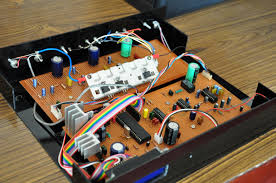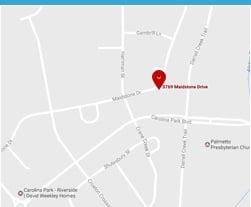 Anyone trying to bring a new piece of electronics to market faces a major balancing act between trying to arrive at-market before the current generation of technology becomes last-gen, while still giving the product enough care and polish to appeal to buyers. The ever-speeding rate of new tech introduction has only made this harder, and we see the result all the time in stores and at trade shows: Half-baked products either rushed to market without proper testing, or being held back by design decisions that have already become antiquated.
Anyone trying to bring a new piece of electronics to market faces a major balancing act between trying to arrive at-market before the current generation of technology becomes last-gen, while still giving the product enough care and polish to appeal to buyers. The ever-speeding rate of new tech introduction has only made this harder, and we see the result all the time in stores and at trade shows: Half-baked products either rushed to market without proper testing, or being held back by design decisions that have already become antiquated.
As the need for faster times-to-market increases, PCB prototype assembly and testing becomes the true bottleneck in the process. New features or software can only be tested as quickly as your manufacturing partner can produce working prototypes. If this process takes weeks -or months- then that can have a substantial impact on the quality and relevance of the product.
The solution here is simple: Look for the manufacturing partner who can work with you throughout the process, and can produce prototypes as quickly as you need.
Four Ways Rapid PCB Prototype Assembly Can Make Better Products
1 - Short prototype turnarounds
Forget waiting for weeks. The top manufacturers with integrated services and on-demand Surface Mount circuit creation can now create prototypes in less than a week, even if it's the first such prototype they're building for you. The CEO or the board of directors won't be waiting around to see evidence that the product can work. A product design file on Monday can be a working piece by Friday.
2 - Integrated software testing
To compete against offshore manufacturing centers, American electronics services have looked to in-house integration of design services. This one-stop-shop approach works hand-in-hand with rapid prototyping, by allowing the onboard software to be designed simultaneously with the hardware it's intended for.
This allows for integrated development, without relying on a third party to design software after the hardware is finalized. It also reduces time-to-market.
3 - More iterations means more refined designs
Every prototype you can produce during the design stage is ultimately going to improve the final product, by allowing you to test out ideas before committing to them. Being able to potentially create a new prototype every week will allow far more feedback from both the board and test users, while also giving more opportunity to discover and fix any design flaws before the production build goes live.
4 - Greater product line diversity
The other major benefit to such rapid prototyping is that it allows you to introduce more hardware variations in the same product line. Both business and private buyers increasingly want hardware designed to fit their specific needs/lives, and that means introducing more products with more sizes, colors, features, and price points.
Rapid prototyping and testing services make a multi-product run a possibility, even for smaller companies. And that's going to give them a substantial benefit when they're looking to compete on the open market.
ZenTech Makes Your Products A Reality - Faster!
If you're still looking overseas for PCB assembly and production, we invite you to look closer to home. Domestic manufacturing can bring you better products, more quickly, and with greater guarantees for end product quality.
Contact ZenTech today for a free consultation on bringing your next product to market ahead of the other guys.





